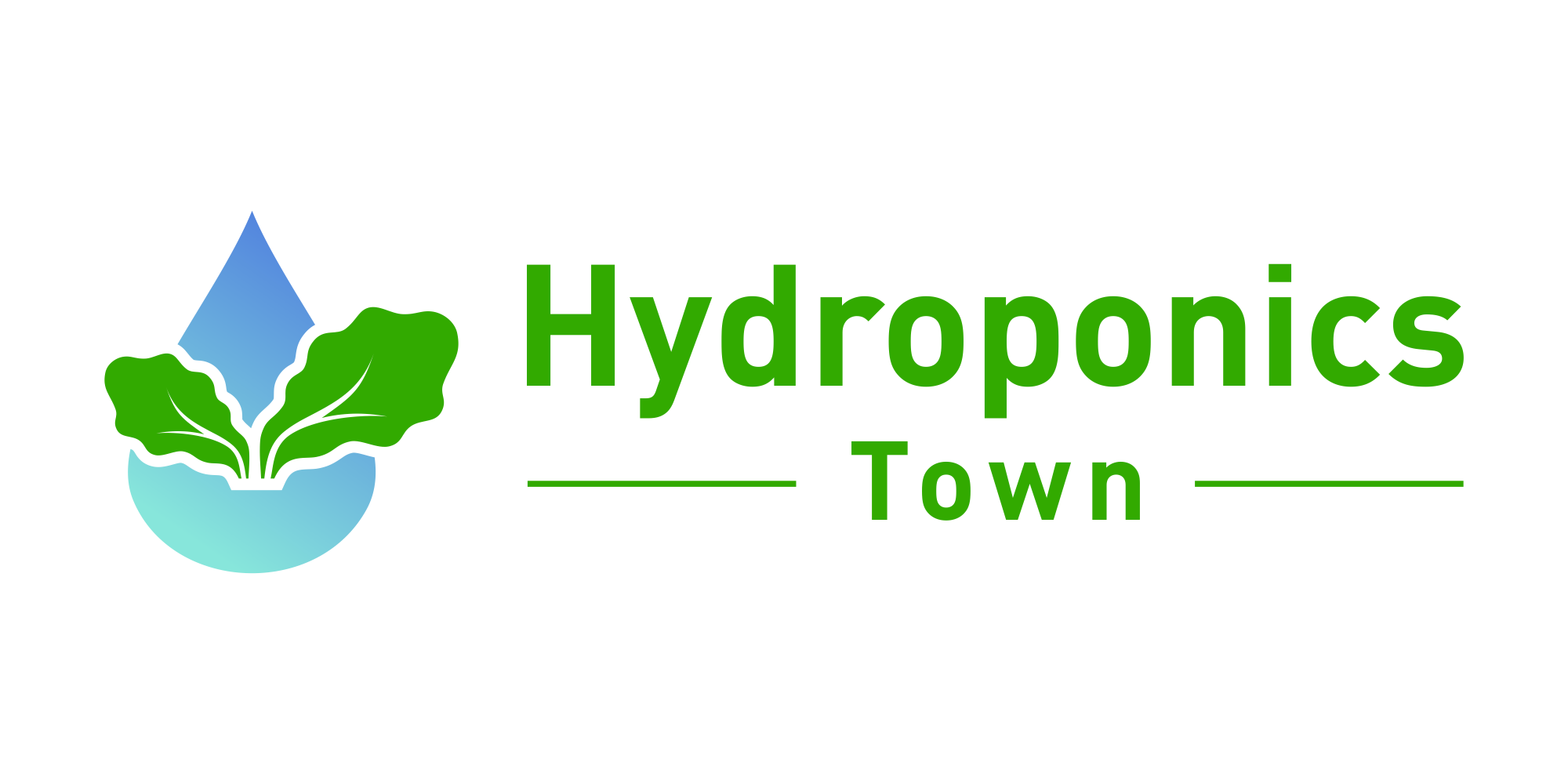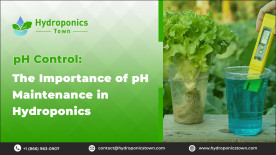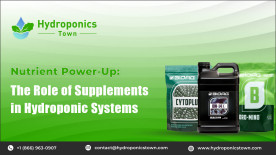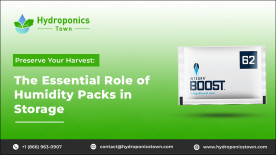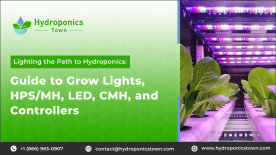Imagine a garden that defies gravity, where plants thrive without the constraints of soil and the limitations of traditional gardening. A hydroponic garden system is a game-changing technique that unleashes the power of water and nutrients to create bountiful harvests in even the tiniest of spaces.
Whether you're a green-thumbed enthusiast or a curious beginner, this step-by-step guide will take you on an exciting journey, unveiling the secrets of building your own hydroponic garden. From futuristic systems to mastering the delicate dance of light and pH levels, get ready to embark on an adventure that will redefine your understanding of what it means to cultivate plants.
Table Of Contents: Types of Hydroponic Water Systems Hydroponic Garden Equipment & Material A Step-by-Step Guide to Building a Hydroponic Garden Choosing Crops for Hydroponic Gardening |
What Is a Hydroponic Garden?
A hydroponics garden is a method of growing plants without soil. It is a soilless gardening technique that relies on nutrient-rich water to deliver essential minerals directly to the plant roots. Plants are typically grown in a controlled environment, like a greenhouse or an indoor setting, in a hydroponic garden system. The roots are immersed in a nutrient solution complete with all the components required for plant development. The lack of soil makes it possible to conserve water and absorb nutrients more effectively.
Here’s Everything You Need to Know about Hydroponic System
Types of Hydroponic Water Systems
There are three main types of hydroponic water systems: wick systems, flood and drain systems, and water culture systems.
Wick Systems
The Wick system is the simplest and easiest hydroponic water system. It consists of a planting container and a water reservoir connected by a wick. The wick acts as a passive transport system, drawing water from the reservoir to the roots of the plants. Hydroponic herb gardens, microgreens, and other small plants are suitable for wick systems, but may not provide enough water for larger plants with higher water requirements.
Flood and Drain Systems
Flood and drain systems, also known as ebb and flow systems, require a submersible pump and are slightly more complex than wick systems. The plants are placed in pots that are suspended above a reservoir of hydroponic nutrients in a shallow tray or grow tube. The tray is periodically flooded with water from the reservoir, enabling the roots of the hydroponic plants to absorb nutrients through the containers' drain holes. The water drains back into the reservoir after a certain amount of time, preventing root rot brought on by too much moisture. These systems typically flood and drain two to four times per day, giving the plants a controlled and balanced water supply.
Water Culture Systems
Water culture systems keep the plants' roots submerged in a nutrient-rich solution at all times. In this type of system, the hydroponic plants are either placed in containers that float on a "raft" in the reservoir, or they are suspended directly overhead with their roots extending into the water. To prevent the water from becoming stagnant and lacking oxygen, a small bubbler or air stone, similar to those used in fish tanks, is used to aerate the water. Water culture systems are relatively easy to set up and are suitable for lightweight crops like lettuce and herbs.
Check out this article and find out What are the Best Plants to Grow Hydroponically
Hydroponic Garden Equipment & Material
Hydroponic gardening is a sustainable and efficient way to grow fresh produce, but getting started can be a daunting task. Here's how to do:
Choose the Right Location for Your Hydroponic Garden
The first step is to decide whether you want to grow your hydroponic garden indoors or outdoors. Indoor gardens are typically smaller and require more artificial lighting, whereas outdoor hydroponic system can be larger but are subject to weather and seasonal changes.
For the best indoor hydroponic garden, choose a room with good ventilation, stable temperature, and access to electricity. South-facing windows or grow lights can provide the necessary light. For an outdoor hydroponic garden, choose a spot with good sunlight exposure and easy access to water and electricity.
Determine the Size and Scale of Your Garden
The next step is to determine the size and scale of your garden based on the available space and resources. Consider factors such as the number and type of hydroponic plants you want to grow, the amount of water and nutrients needed, and the available space for planters or hydroponic garden system.
Start small with a few plants if you're new to hydroponic gardening. You can always expand later as you gain experience. Consider using vertical hydroponic systems if you have limited horizontal space.
Gather the Necessary Materials and Equipment
The final step is to gather the necessary hydroponic equipment and materials. Here is a list of some of the basic items you'll need:
Planters or hydroponic system kit: There are many types of planters and hydroponic garden kit, including deep water culture, nutrient film technique, and drip irrigation. Choose the one that suits your needs and space.
Nutrient solution: Plants grown hydroponically require a balanced nutrient solution to thrive. You can buy pre-made solutions or mix your own using commercial nutrients or household items like Epsom salt and baking soda.
Water pump: A water pump is necessary for circulating the nutrient solution through the hydroponic system.
Grow lights: If you're growing indoors, you'll need artificial lighting to supplement natural light. LED lights are energy-efficient and effective for hydroponic gardening.
pH tester: Maintaining the right pH level is crucial for hydroponic gardening. You'll need a pH tester to measure and adjust the pH of the nutrient solution.
Other specialized tools: Depending on the type of hydroponic system you're using, you may need other tools like air stones, tubing, and timers.
A Step-by-Step Guide to Building a Hydroponic Garden
If you're interested in building aDIY hydroponic garden, this step-by-step guide will walk you through the process. It will help you create a thriving and productive hydroponic setup.
Step 1: Choose a Suitable Container
The first step is to select a suitable container for your DIY hydroponic garden. You can use a plastic bin, large bucket, or any other watertight container that is at least 6 inches deep. Ensure that the container is large enough to accommodate your desired number of plants.
Step 2: Measure the Inside of the Container
Measure the inside dimensions of the container to determine the size of the growing tray or pots you'll need. It's crucial to ensure that the trays or pots fit snugly inside the container without any gaps or spaces.
Step 3: Construct the Spray Manifold's Outer Section
To build the spray manifold, you'll need PVC pipes and fittings. Cut a section of PVC pipe to match the length of your container. Attach a T-shaped PVC fitting to one end of the pipe, ensuring that the top of the T faces upward. This fitting will serve as the water supply for the spray manifold.
Step 4: Install Spray Nozzles
Using a drill, create holes along the length of the PVC pipe. These holes will accommodate the spray nozzles, which will distribute the nutrient solution to your plants. Insert the spray nozzles into the holes, ensuring a tight fit. You can adjust the number and spacing of the nozzles based on the size of your container and the number of plants you plan to grow.
Step 5: Connect the Spray Manifold
Attach a 90-degree PVC elbow fitting to the open end of the spray manifold. This elbow will direct the water flow toward the center of the container. Connect the other end of the elbow to a PVC pipe that will serve as the return line.
Step 6: Construct the Support Structure
To support the plants, you'll need a framework above the container. Use PVC pipes and fittings to build a sturdy support structure. Create a rectangular or square frame that matches the size of your container. Attach additional PVC pipes vertically within the frame to create a grid-like structure for supporting the plants.
Step 7: Install the Growing Trays or Pots
Place the growing trays or pots on the support structure within the container. Ensure they are properly positioned and securely held in place. The trays or pots should align with the holes in the container, allowing the plant roots to access the nutrient solution.
Step 8: Set Up the Water Pump and Reservoir
Install a water pump in the nutrient solution reservoir, which can be a separate container placed adjacent to the hydroponic garden. Connect the pump to the spray manifold's water supply line. The pump will circulate the nutrient solution through the manifold, delivering it to the plant roots.
Step 9: Mix and Maintain the Nutrient Solution
Follow the instructions provided with your hydroponic nutrient solution to mix the appropriate amount of solution with water. Maintain the pH and nutrient levels according to the specific requirements of your plants. Regularly monitor and adjust the solution to ensure optimal plant growth.
Step 10: Provide Light and Ventilation
Place your hydroponic garden in an area that receives adequate light or install grow lights above the plants. Ensure proper ventilation to prevent excessive humidity and promote healthy plant growth.
Choosing Crops for Hydroponic Gardening
Choosing the right crops for hydroponic gardening is crucial for success. Opt for plants that thrive in nutrient-rich water environments, such as lettuce, herbs, tomatoes, and strawberries. By providing vital nutrients for plant growth, nutrient solutions are essential in the hydroponics process. Both macronutrients like potassium, phosphorus, and nitrogen as well as micronutrients like iron, manganese, and zinc should be present in these solutions.
Select a nutrient solution specifically formulated for hydroponics or create your own using water-soluble fertilizers. Ensure proper preparation by following instructions and maintaining pH levels between 5.5 and 6.5. Regular monitoring and adjustment of nutrient levels will help your hydroponic plants flourish.
Maintaining and Planting the Hydroponic Garden
Maintaining and planting a hydroponic garden requires attention to detail and regular care. To prepare seedlings for hydroponic planting, start by germinating the seeds in a suitable medium, such as rockwool cubes. Once the seedlings have developed roots, carefully transfer them to the hydroponic system, ensuring the roots are placed in a growing medium like perlite or clay pellets.
The planting process in a hydroponic system involves providing the plants with a nutrient-rich solution and ensuring proper water circulation. Monitor pH levels regularly to maintain an optimal range for nutrient uptake. Adjust the pH using pH-up or pH-down solutions as needed. Nutrient replenishment is vital to provide the necessary elements for plant growth. Follow the recommended dosage and adjust based on plant requirements and growth stages.
Pest control is crucial in hydroponics. Implement preventive measures like maintaining a clean environment, using beneficial insects, and employing physical barriers. Regularly inspect plants for signs of pests and diseases, and take appropriate action to mitigate the issues. Consistent monitoring and maintenance will ensure a thriving hydroponic garden with healthy plants and abundant yields.
Harvesting and Troubleshooting of a Hydroponic Garden
Harvesting and troubleshooting are crucial aspects of hydroponic gardening to ensure optimal yields and prevent potential problems. When it comes to harvesting, timing is key. Monitor your plants closely and harvest when they reach their desired maturity, indicated by size, color, or taste.
For leafy greens, pick the outer leaves while leaving the inner ones to continue growing. When troubleshooting, keep an eye on nutrient deficiencies, pH imbalances, and pests. Regularly test and adjust the nutrient solution, maintain pH levels within the recommended range, and implement integrated pest management strategies.
To maximize yields, provide adequate light, ventilation, and temperature control. Prevent problems by practicing good hygiene, avoiding overcrowding, and ensuring proper water circulation. Regularly clean and maintain equipment, and monitor plant health to catch issues early on. With attention to these factors, you'll enjoy a bountiful and hassle-free hydroponic harvest.
Building a hydroponic garden is an innovative and rewarding way to grow plants without soil. Throughout this step-by-step guide, we have explored the key points necessary to start your own hydroponic garden. From selecting a suitable system and nutrient solution to providing the right lighting and monitoring plant growth, we have covered it all. By venturing into hydroponics, you can enjoy the benefits of faster growth, higher yields, and year-round gardening.
FAQs
How do you garden with hydroponics?
Gardening with hydroponics involves growing plants in nutrient-rich water without soil, using a system that provides the necessary light, water, and nutrients to support plant growth.
Is an indoor hydroponic garden worth it?
Indoor hydroponic gardens can be worth it for those with limited outdoor space or unfavorable growing conditions, as they offer controlled environments, efficient water usage, and year-round cultivation opportunities.
Is hydroponics healthier than soil?
Hydroponics can provide a healthier growing environment as it allows for precise control of nutrient levels, reducing the risk of soil-borne diseases and pests.
Do hydroponic gardens use a lot of electricity?
The electricity consumption of hydroponic gardens varies depending on factors such as the size of the system, type of lighting used, and environmental conditions, but efficient setups can minimize energy usage.
Do hydroponic gardens attract bugs?
Compared to conventional soil-based gardens, hydroponic gardens are typically less susceptible to pests and diseases, but they can still draw some pests if proper sanitation and pest management procedures are not followed.
